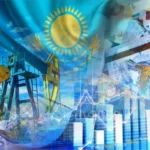
Energy Minister: Kazakhstan working on national carbon tax

Press release – USAID, EBRD Sign MOU On Central Asia Partnership For A Low Carbon Future
As a child growing up in the tiny village of Baydala in northern Kazakhstan, one of Mariyash Salimgereyevna Zhakupova’s daily chores was cleaning the family’s kerosene lamp. To her small hands, it was heavy and sticky, but it had to be done, for it was the family’s only source of light once evening fell.
When electricity came to Mariyash’s village in 1957, it had a huge impact on both her community and her future career.
“Electricity coming to my village was wonderful,” she said. “Everyone felt how much easier their daily work had become.”
“And when it was time for me to choose a specialty at the technical university, I elected to study power engineering,” Mariyash said. “To this day, I believe that the role of the energy sector is very big and bright.”
Now a power engineer for The United States Agency for International Development (USAID) Power the Future and Power Central Asia activities, Mariyash is bringing her more than 50 years of experience in Kazakhstan’s energy sector to support national energy policy transformation, clean energy development, and creation of a regional electricity market.
Having worked and studied power engineering from the 1960s to 1990s in Kazakhstan, Russia and Turkey, Mariyash has seen decades of change in the energy sector. She helped design Kazakhstan’s Unified Energy System when it was part of the Soviet Union, taught electrical systems and networks as an assistant professor at the Almaty University of Power Engineering and Telecommunications, and oversaw dispatching in various positions at the Ministry of Energy of Kazakhstan, the Kazakhstan Electricity Grid Operating Company and the Kazakhstan Electricity and Power Market Operator – four of USAID’s key partners in the country.
Mariyash was always passionate about the power of energy to transform society; however, she was often one of few women studying and working in the field.
“There have always been long-standing prejudices that electrical engineering is purely a male profession,” she said. “But women’s intellect, education, patience, accuracy and sense of responsibility can and do have a rightful place in today’s energy sector.”
Although more and more women see the sector as a career path, significant discrepancies exist in what is still a very male-dominated field.
A survey conducted by Kaz Energy and the European Bank for Reconstruction and Development from 2016-2019 showed that women make up only 24% of all employees in the energy sector and women generally have proportionally higher levels of education than men. For example, 64% of all women compared to 47% of all men in energy sector jobs have an advanced (master’s or doctorate) degree or equivalent. However, less than 12% of all female employees hold management positions compared to 16% of males.
Disparities in wages are also an unfortunate reality. Women earn on average 77% of men’s total pay in non-management business and administration roles in the energy sector, and 59% of men’s total pay in technical and operational roles. This comes in comparison to women earning 81% of men’s total average pay across the total workforce in Kazakhstan.
“Routine work often falls on women’s shoulders,” Mariyash explained. “Although their hard work is very important, sometimes it goes unnoticed, and women become the ‘invisible front’ of our government agencies.”
“However, with new initiatives promoting gender equality, I believe that women can take on many more roles in the energy sector, especially in aspects such as design, teaching and analysis,” she said.
USAID agrees. By encouraging young women to study and pursue careers in Science, Technology, Engineering and Mathematics, creating opportunities for women to learn more about energy through master’s degree programs, internship opportunities and study tours, and creating forums where women in energy can network and exchange ideas, The USAID Power the Future and Power Central Asia activities hope to shrink some of the gender gaps in the energy sector.
Certainly, Mariyash sets an example for the next generation of women hoping to help shape their countries’ low carbon futures.




